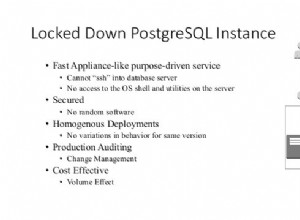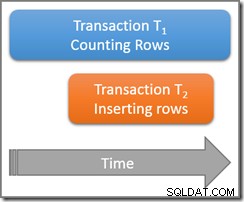Różnica między NIE W i NIE ISTNIEJE staje się jasne, gdzie są NULL wartości zawarte w wyniku.
Na przykład:
create table test_a (col1 varchar2(30 char));
create table test_b (col1 varchar2(30 char));
insert into test_a (col1) values ('a');
insert into test_a (col1) values ('b');
insert into test_a (col1) values ('c');
insert into test_a (col1) values ('d');
insert into test_a (col1) values ('e');
insert into test_b (col1) values ('a');
insert into test_b (col1) values ('b');
insert into test_b (col1) values ('c');
insert into test_b (col1) values (null);
Uwaga :Kluczową różnicą jest to, że test_b zawiera null wartość.
select * from test_a where col1 not in (select col1 from test_b);
Nie zwrócono żadnych wierszy
select * from test_a where
not exists
(select 1 from test_b where test_b.col1 = test_a.col1);
Zwroty
col1
====
d
e




